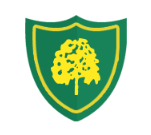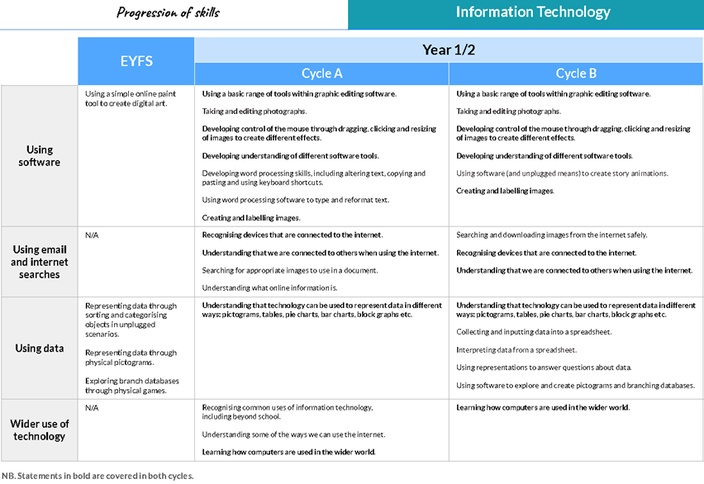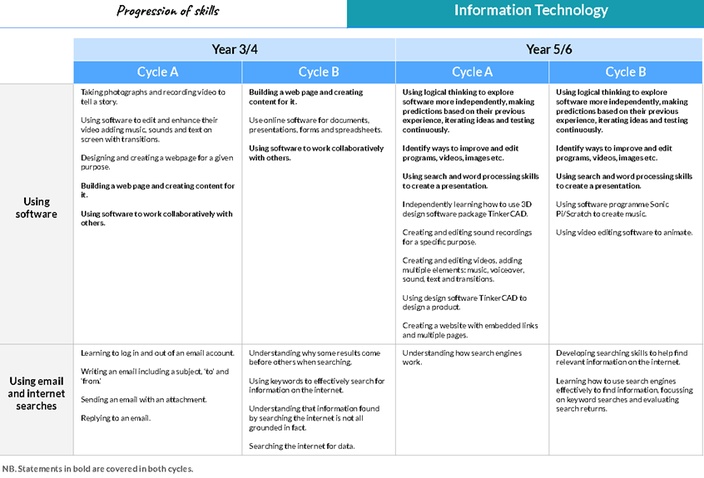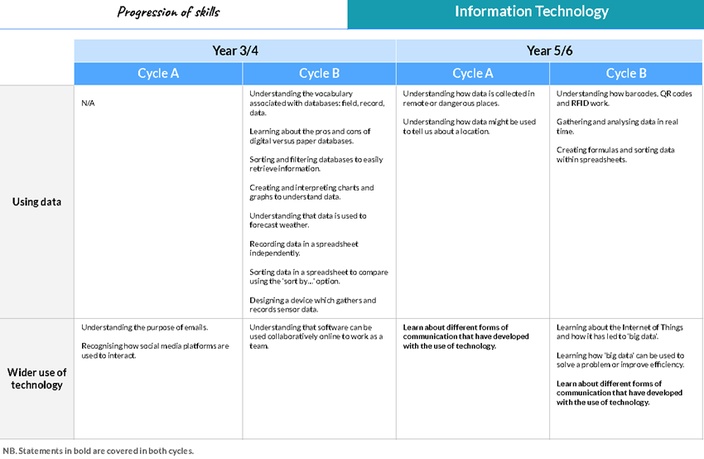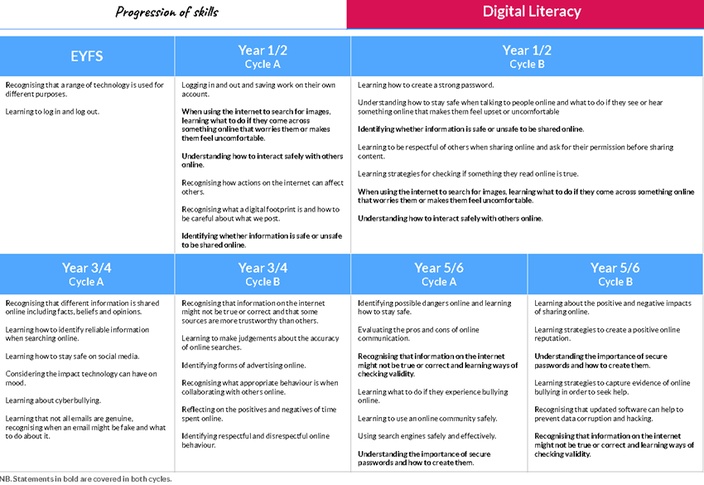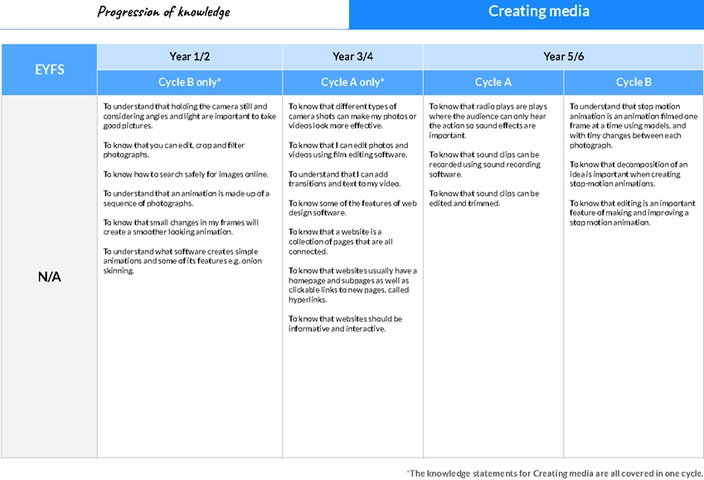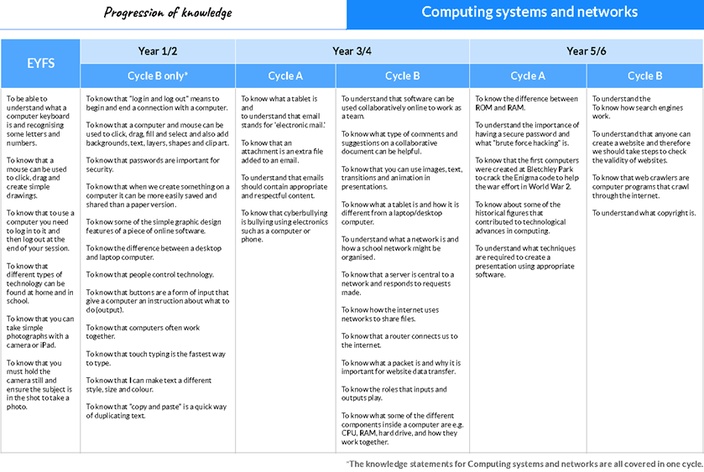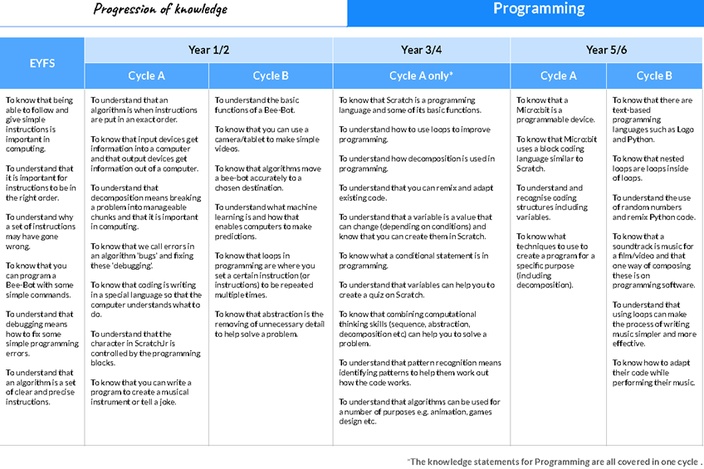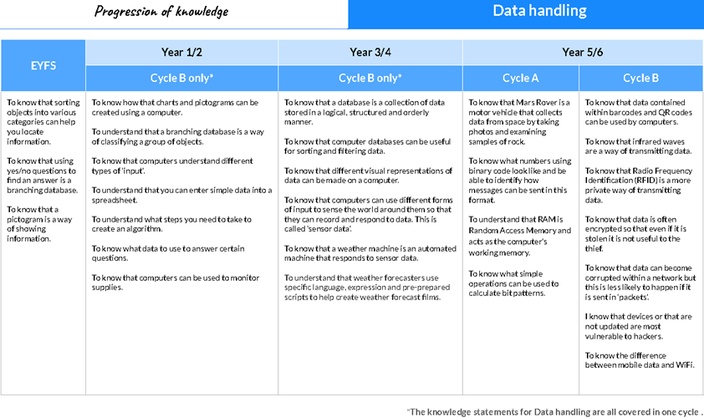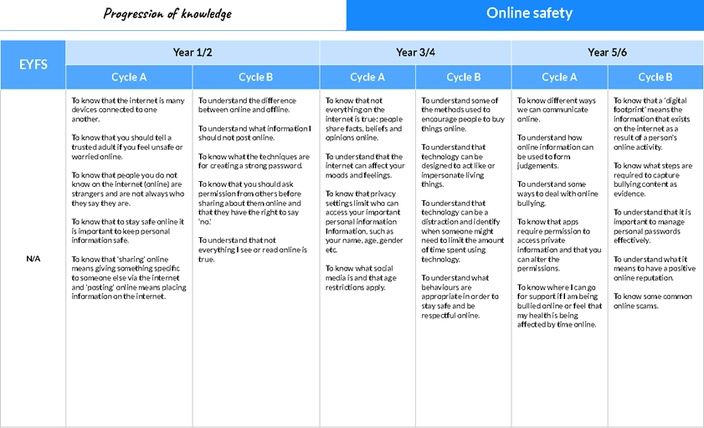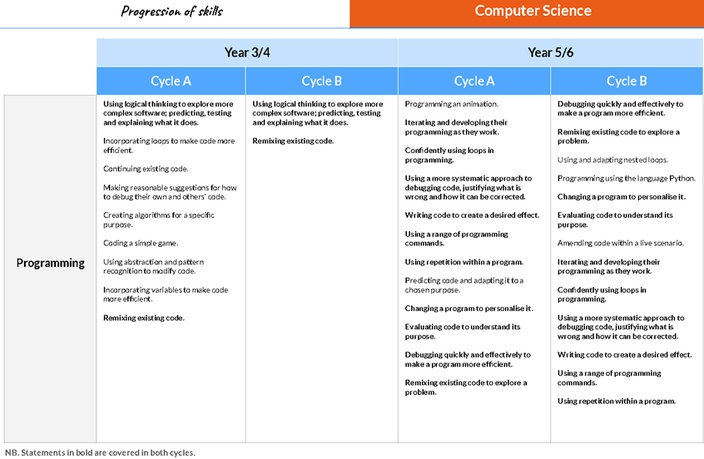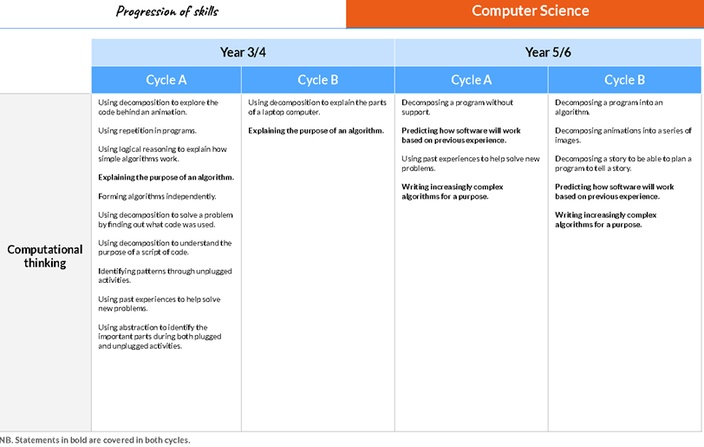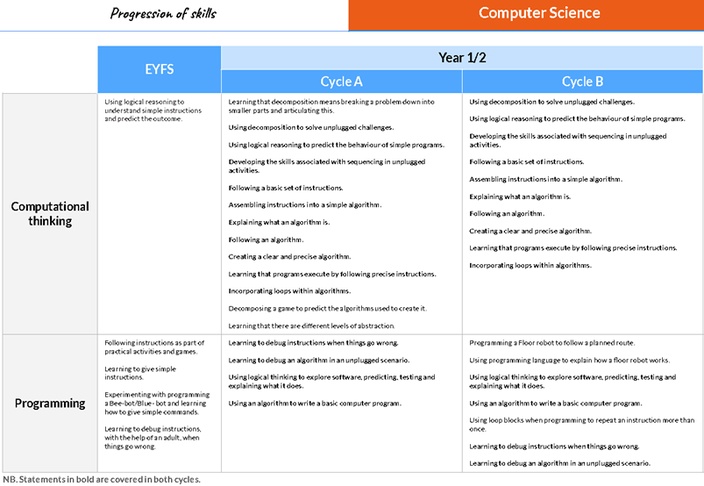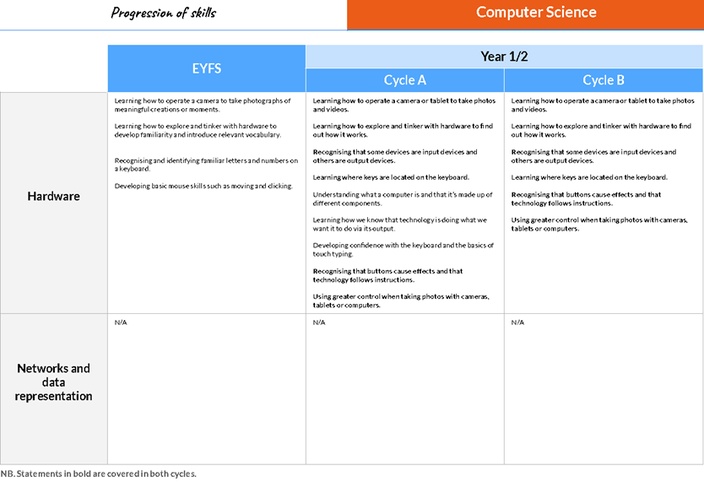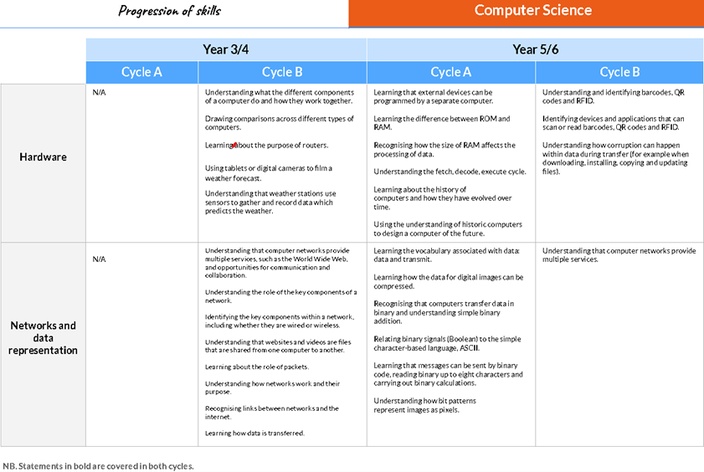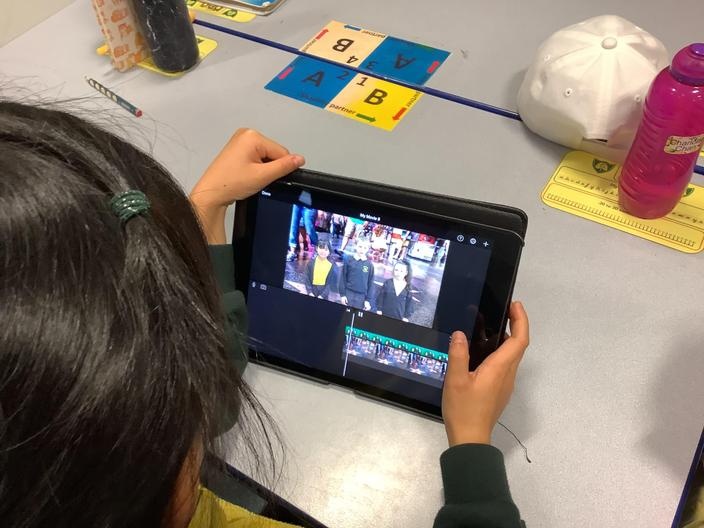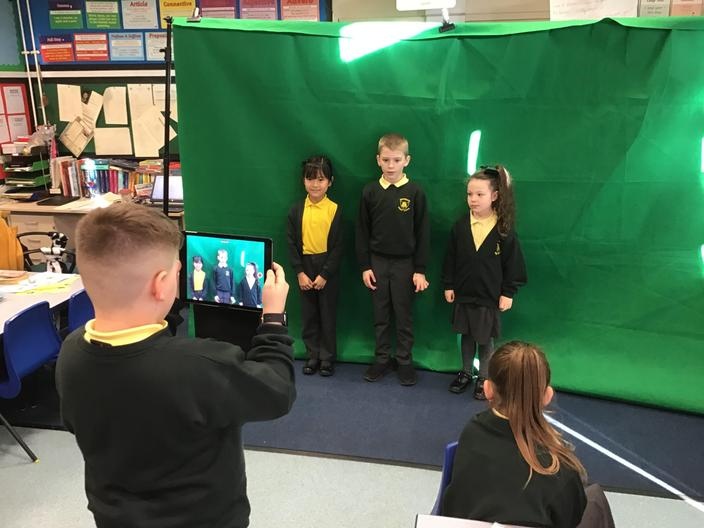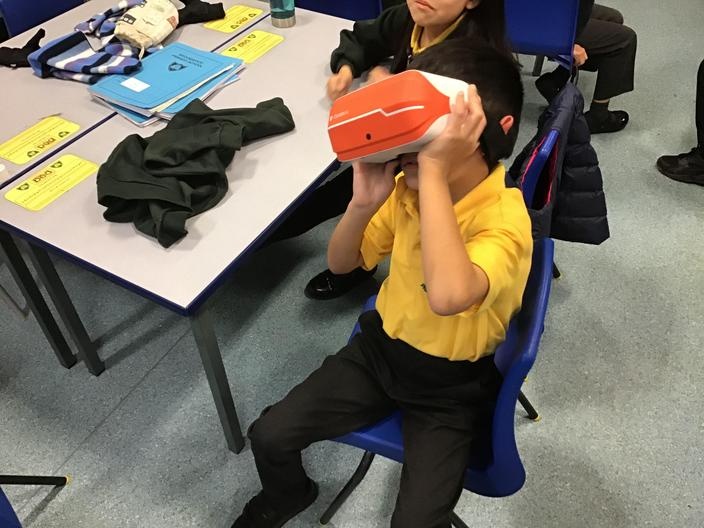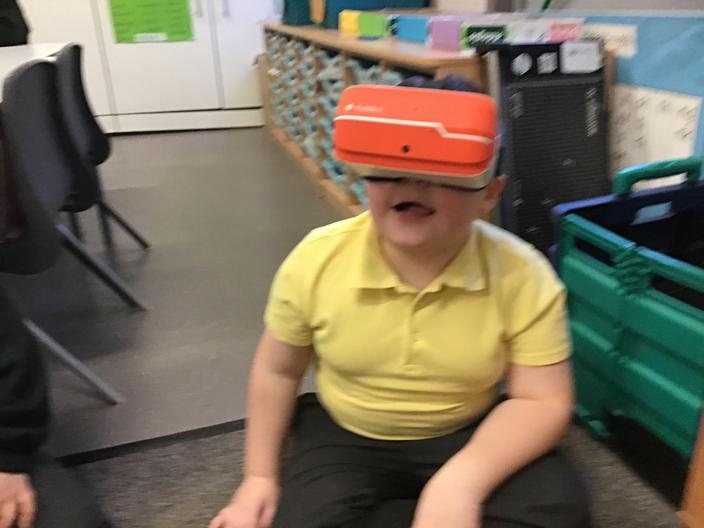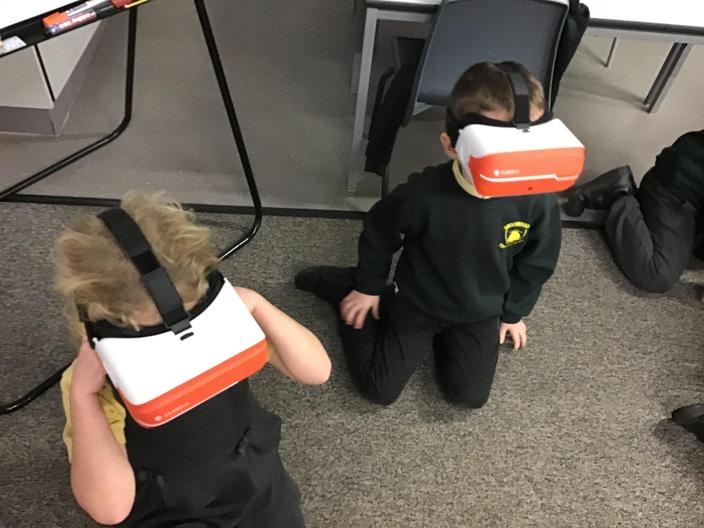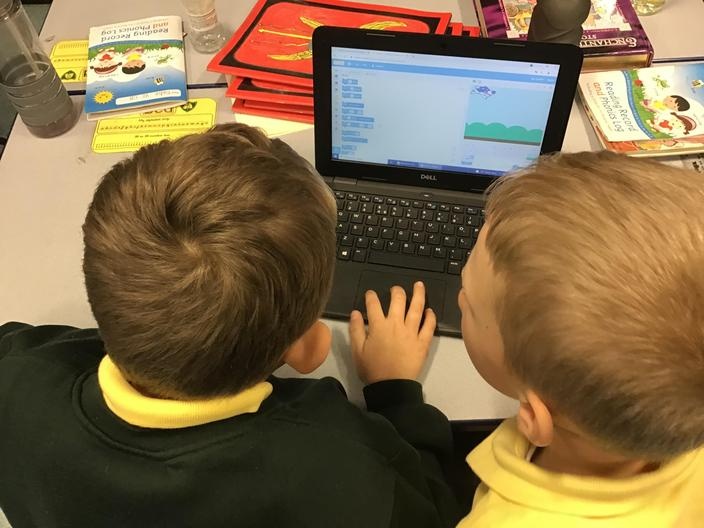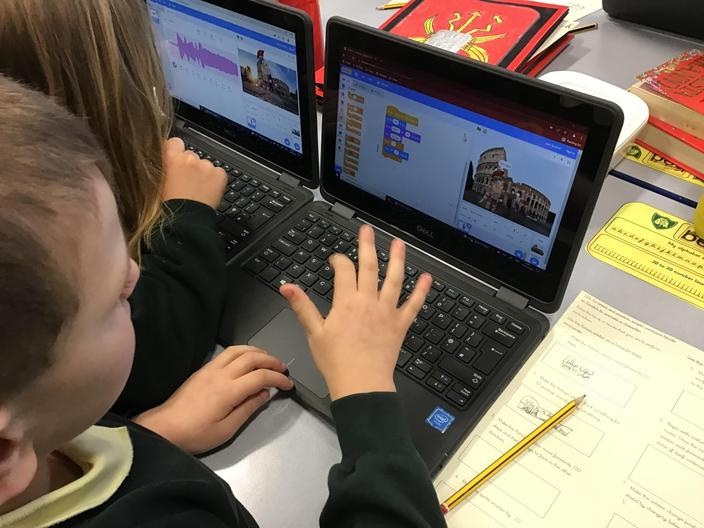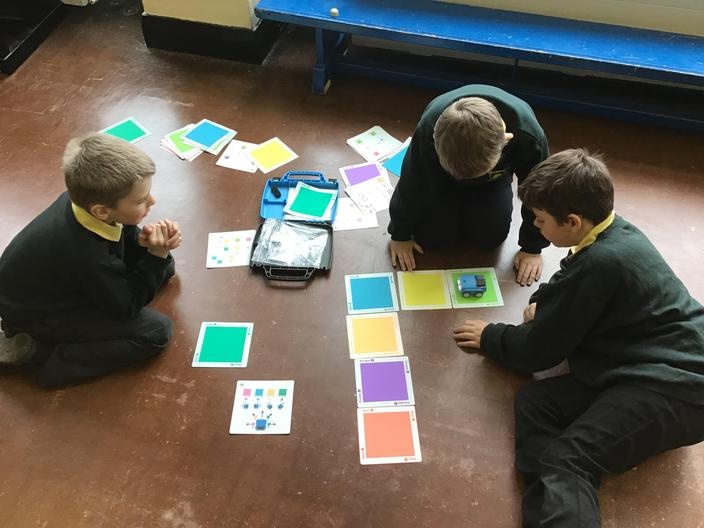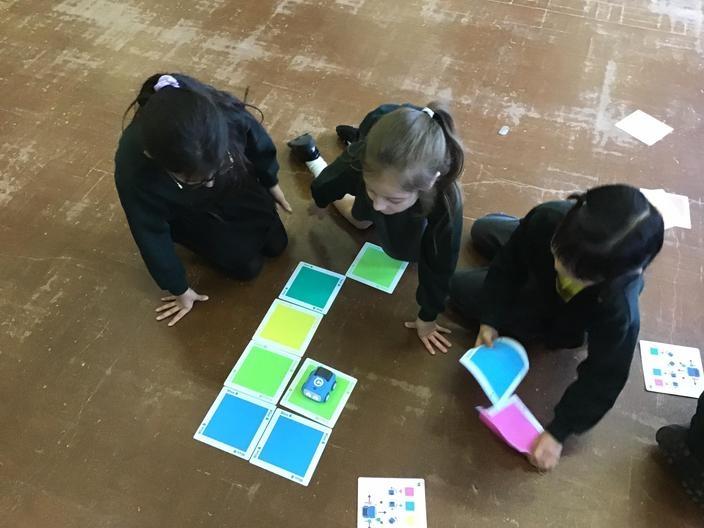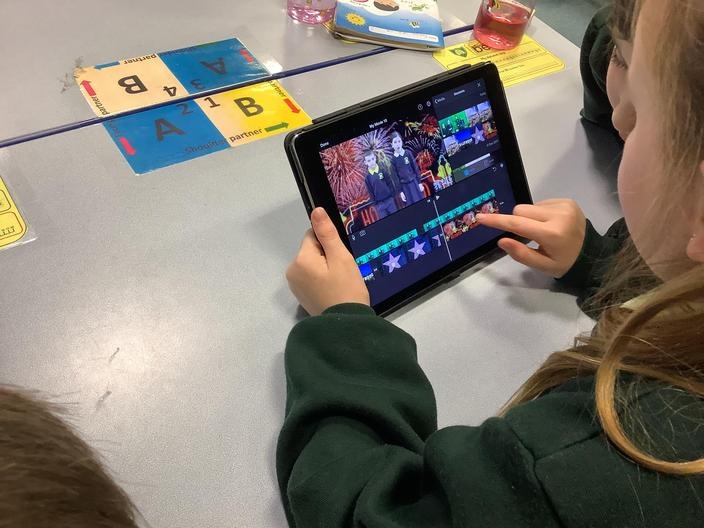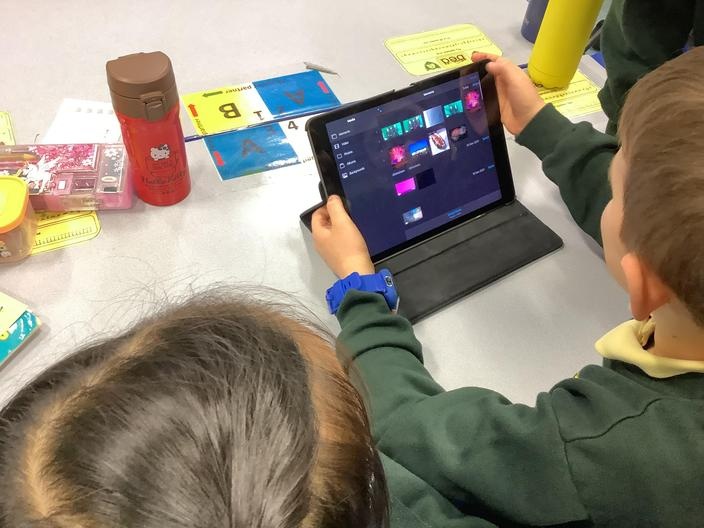Computing
At Broomwood Primary School we recognise that computing changes the lives of everyone. Through teaching the skills of computing we equip children with the skills required to participate in a rapidly changing world where work and leisure activities are increasingly transformed by technology. We enable them to find, explore, analyse, exchange and present information as well as using computing skills to programme or use equipment for a range of activities. We also focus on developing the skills necessary for children to be able to use information in a discriminating and effective way, validating it before accepting its accuracy. Children also learn how to stay safe whilst using the internet and how the use of computing can help them become creative, independent learners, by taking the laborious routine out of some text and information tasks.
Intent
The intent of our computing curriculum is to be inclusive, inspiring and technologically challenging, which develops transferable skills in programming, word processing and data analysis, enabling children to be successful and safe in the technological world. We use Kapow Primary Scheme to teach our computing curriculum. The lessons instil a sense of enjoyment around using technology and develop pupil’s appreciation of its capabilities and the opportunities technology offers to, create, manage, organise, and collaborate. Tinkering’ with software and programs forms a part of the ethos of the scheme as we want to develop pupils’ confidence when encountering new technology, which is a vital skill in the ever evolving and changing landscape of technology. Through our curriculum, we intend for pupils not only to be digitally competent and a range of transferable skills at a suitable level for the future workplace, but also to be responsible online citizens.
The scheme of work enables pupils to meet the end of Key Stage Attainment targets outlined in the National curriculum and the aims align with those in the National curriculum.
The Kapow Primary scheme of work is designed with three strands which run throughout:
- Computer Science
- Information technology
- Digital literacy
Under these three strands the computing curriculum is broken down further into 5 key schemas:
- Computing systems and networks
- Programming
- Creating media
- Data handling
- Online safety
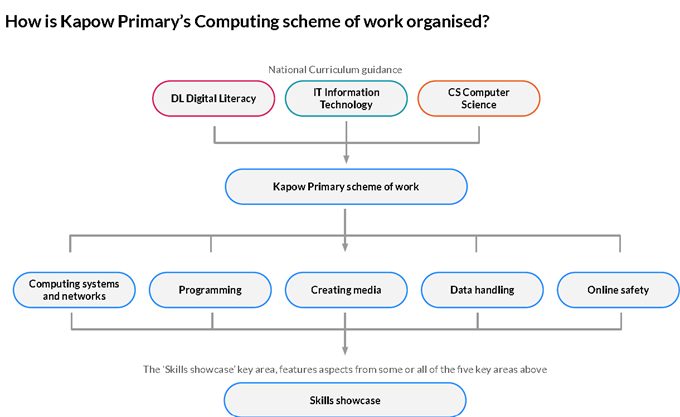
Content: Our intention is that topics taught contribute to a subject-specific schema. We intend to map topics so as to form these effectively over the long term. This is set down in the long-term plans below.
The progression of computing skills demonstrates how substantive and disciplinary knowledge is taught and built upon across the school.
Implementation
A high-quality computing education equips pupils to use computational thinking and creativity to understand and change the world. Computing has deep links with mathematics, science, and design and technology, and provides insights into both natural and artificial systems.
In our school computing is taught through the 3 core areas: computer science, information technology and digital literacy, ensuring a broad and balanced curriculum.
The core of computing is computer science, in which pupils are taught the principles of information and computation, how digital systems work, and how to put this knowledge to use through programming.
Programming is taught in a progressive way, moving from programmable toys in EYFS to Scratch Jr, Hopscotch and Daisy in KS1 and Scratch, Python and app development in KS2. This learning is done within our topics and once the skills have been developed the enquiry-based challenges, which require children to apply the skills have a clear brief and intended user, giving purpose to their learning.
Building on this knowledge and understanding, pupils are equipped to use information technology to create programs, systems and a range of content. A knowledge led approach ensures that children have the opportunities to develop topic specific vocabulary and encourages the children to become articulate learners.
Computing also ensures that pupils become digitally literate – able to use, and express themselves and develop their ideas through, information and communication technology – at a level suitable for the future workplace and as active participants in a digital world. One example of this is word processing skills, which are taught explicitly in KS1, whereas in KS2 they are used within lessons from other subject areas (e.g.
Literacy) to embed these skills in the curriculum and show the children how they can be used in real situations.
Computing clubs at our school offer children further opportunities to develop their computing skills and build on their own interests. IPAD club have enjoyed basic coding and creating stop-motion animation films. Code club have deepened their understanding of algorithms and have used Micro Bits to demonstrate their coding skills.
Children are prepared to be safe when using technology through E-safety teaching. This is always taught through the SMART rules at the start of the year and then through Kapow units each half term.
How it fits across the Overall Curriculum
Computing is taught across the school by being linked to the thematic curriculum on a two-year rolling programme, where possible. Where this is not possible, the lessons are taught discretely alongside the thematic curriculum.
Computing in the Thematic Curriculum
We meet the requirements of the New Primary Curriculum through our thematic curriculum. All children throughout Key stage 1 and 2 are be given access to computing teaching throughout each topic.
A long-term plan has been created to show how the blocks of computing have been matched with our thematic curriculum. Planning is taken from the Kapow schemes of work, however the activities in the scheme are used as a guideline and the objectives may be covered with activities more suited to our topics.
How is the subject taught to each Key Stage, including Foundation
It is anticipated that the majority of activities will be undertaken with whole class groups. Teachers will use their own judgement as to when and how children should be grouped at these times. Some opportunities for individual work and experimentation should also be provided. A range of resources will be used across the school, including Computers, iPads, Lego WeDo, Bee Bots, sound buttons, talking books, remote control cars, cameras and laptops. We aim to vary the teaching methods within each lesson in order to provide constant reinforcement for the computing skills being learned. Kagan structures are used to ensure all children are involved and to encourage partner and group work and evaluation.
E-safety will be mentioned at the start of each session to remind children and ensure they stay safe. We remind children, ‘If you see something which upsets you, tell an adult you trust’. E-safety rules are on display in all networked rooms and are discussed with the children. All pupils are given lessons on E-Safety appropriate to their age group scheduled throughout the year taken from Kapow (this can also be done using Childnet and thinkyouknow online resources).
We recognise that all classes have children with widely differing computing abilities. this is especially true when some children have access to computing equipment at home, while others do not. In school we provide suitable learning opportunities for all children by matching the challenge of the task to the ability and experience of the child. We achieve this in a variety of ways by:
- Setting common tasks which are open ended and have a variety of responses
- Setting tasks of increasing difficulty
- Grouping children by ability in the room and differentiating tasks
- Providing resources of different complexity that are matched to the ability of the child
- Using classroom assistants where available to support the work of individual children or groups.
In the Early years children have access to computing through focus tasks and inside and outside continuous provision. The children will be encouraged to experiment with a range of resources including cameras, bee bots, remote control cars and sound buttons. They learn basic computing vocabulary.
Computing is used in our other lessons too. As the aims of computing are to equip children with the skills necessary to use technology to become independent learners, the teaching style we adopt is as active and practical as possible. While at times we do give children direct instructions to use hardware and software, the main emphasis of our teaching is in individuals or groups of children using technology to help them in whatever they are studying. So, for example the children might research a topic using the internet. We encourage children to explore ways in which computing can be used to improve their results, for example, how a piece of writing can be edited or how the presentation of a piece of work could be improved using publishing software.
Impact
Our knowledge based curriculum, which is broad and balanced, enables children to develop skills in computing which will prepare them for their futures. it provides a solid base for them to further develop their knowledge of coding and digital design and provides them with word processing and data analysis skills which will be useful in high school and their futures.
The impact of Kapow’s Primary scheme can be constantly monitored through both formative and summative assessment opportunities. Each lesson included guidance to support teachers in assessing pupils against the learning objectives and each unit has a unit quiz and knowledge catcher which is used at the end of the unit to assess pupils.
After the implementation of our computing curriculum, pupils should leave school equipped with a range of skills to enable them to succeed in their secondary education and be active participants in the ever-increasing digital world.
The expected impact is that the children will:
- Be critical thinkers and able to understand how to make informed and appropriate digital choices in the future.
- Understand the importance that computing will have going forward in both their educational and working life and their social and personal futures.
- Understand how to balance time spent on technology and time spent away from it in a healthy and appropriate manner.
- Understand that technology helps to showcase their ideas and creativity. They will know that different types of software and hardware can help them achieve a broad variety of artistic and practical aims.
- Show a clear progression of technical skills across all areas of the National curriculum- computer science, information technology and digital literacy.
- Be able to use technology both individually and as part of a collaborative team.
- Be aware of online safety issues and protocols and be able to deal with any problems in a responsible and appropriate manner.
- Have an awareness of developments in technology and have an idea of how current technologies work and relate to one another.
- Meet the end of key stage expectations outlined in the National curriculum for computing.
